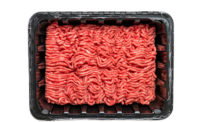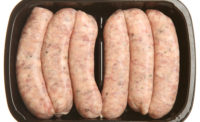I recently spoke with a veteran packaging executive whose experiences span enough years that his notions on trays are well informed by practical knowledge and businesslike candor. His take on the direction of trays and tray sealing reveal how food packaging reflects so much about how we view meals and meal planning.
Today’s protein products are looking to demonstrate added value, however, you picture it, as a differentiator among a consumer base whose varied tastes, desires, and expectations are constantly shifting. Keeping the supply chain satisfied with successful legacy products is hard enough. Recent circumstances continue to teach us that. Now amplify that headache with constant pressure to pump new entrants into the system to satisfy shoppers morphing work styles and lifestyles and to quell their voracious appetites for fresh menu options. Suddenly nimbleness and flexibility are more than valued business qualities. They’re prized packaging attributes.
“The future for premade trays looks like they’re going into a lot of on-the-go ready meal and convenience applications where a robust package and low entry investment are vital,” the executive explains. He thinks tray sealing is back on the rise after experiencing some displacement from rollstock. “I see reports that say, globally, the growth rate in the tray-sealing business is greater than 5% for the next decade. And a lot of that ends up in North America. We’re the greatest importer of tray sealers.”
This tray rally is based on several things. Covid is one of them sparking so many to keep working from home even when they no longer may be required to do so. “There’s more food delivery. It’s also the convenience that Millennials are looking for. Also, premade trays are very flexible in their application. You can do multiple formats like MAP and VSP.”
All of this seems in line with the general truth that it’s the product and how it’s processed that points to the proper packaging format. “As an example, you’ll find bone-in cuts in pre-made trays MAP, but you’ll also find them in a flexible package loaded with nylon to prevent leakers. What’s the asset that the processor has and what’s the flavor of the retailer? What do they prefer to see the product in?” The good news is that the tide is rising for everyone. Thermoform trays are growing, too, at a rate of better than 5% for the next decade, according to the source. Seafood applications such as salmon and haddock fillets appear to be a rich growth segment for semi-rigid trays with VSP on top, in addition to the more recognized applications like shingled deli meats and cheeses.
Tray formats have found their market niches as bags and film did. It’s less of a direct competition among tray formats and more of what works best for the products and the business and helps deliver the most value to shoppers.
Will there ever be a great conversion from tray sealers to thermoform? Someone with tray sealing might say, let’s get a rollstock machine if they have the volume numbers. Everyone I know with rollstock also has tray sealers. They give you flexibility and additional capacity. When new business comes along, it may take a while to receive a new roll stock machine and get it installed and qualified. In the meantime, you can meet that demand with a tray sealer. Once you’ve moved production to the rollstock machine, you can use that tray sealer to generate more new business. I think those who have tray sealers stay with them and those with roll stock stay with them. They will remain an effective mix.
And that’s the crux of trays and tray sealing: finding and maintaining a mix that best satisfies the needs of the supply chain and insistent consumers.





Report Abusive Comment